I have friends who are retired and they will often say to me that one day just seems to roll into another, such that after a while they begin to lose track of time. Whilst I have not planned on retiring for a few years yet, being on furlough in lockdown at home for several weeks has become somewhat rather like Groundhog Day. What I mean by that is I was surprised how quickly you forget what day it is until my friend Neil Morton from Progress Concepts, our website guru phoned to remind me it was the end of the month and the diary update for Longbow was now due.
This month we were contacted by Steven Watts in Melbourne Australia, with some photos of his father Tom Watts, who had bought a Derwent pure thrust jet engine from a Gloster Meteor aircraft via the Australian military disposals in the 1960’s for £60 and shoehorned it into a second hand Jones designed 17′ 4″ long hydroplane. That boat had been originally designed to be powered by a petrol engine and propeller driven and in addition to the jet engine Tommy converted the boat from a rear driver position to well forward in the hull and called the craft Exciter. In 1969 Tommy managed to obtain two Australian Power Boat Association (APBA) Records of 146.64mph and later that year 162.63mph with this infamous jet hydroplane.
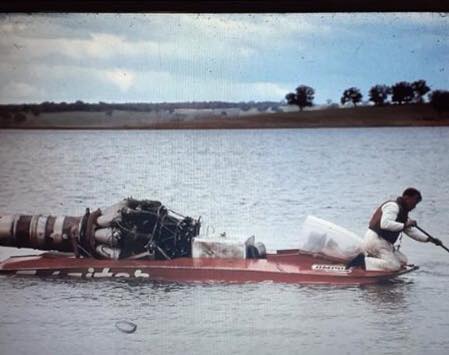
The installation of the Derwent jet engine in the hull of Exciter by Tommy was by all accounts far from ideal with the engine being simply chained down into the hull, the thrust angle being altered by the addition of timber blocks and fencing wire used for the engine controls, with engine tests done by tying the boat to a tree! However despite all of its shortcomings this did not stop the speeds and records from being obtained. Tommy even gave paid rides to passengers in the boat to fund running it for those brave enough to want to sit in with him.
Tommy being a rather colourful character had during his boat racing career several altercations with race course officials and drivers in addition to running Exciter ashore on one occasion such that he then turned his attention to building a jet powered truck based on a converted 1959 Foden vehicle. Steve said that his father originally powered the truck with an Avon jet engine from the Canberra aircraft and then changed the power-plant to twin Derwents, again from the Gloster Meteor aircraft, the vehicle was called Puff The Magic Dragger.
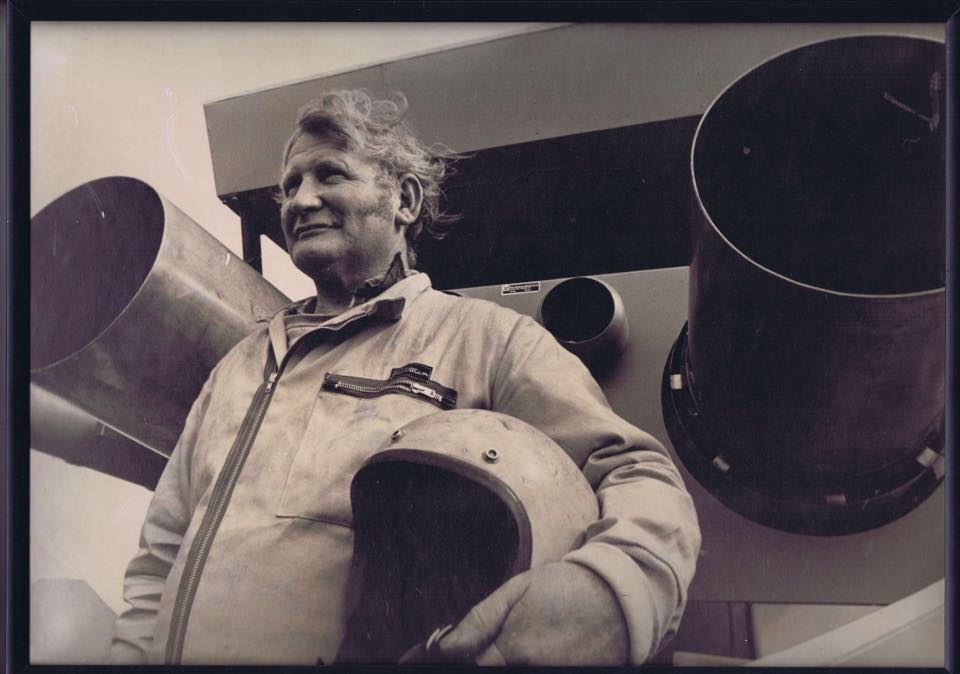
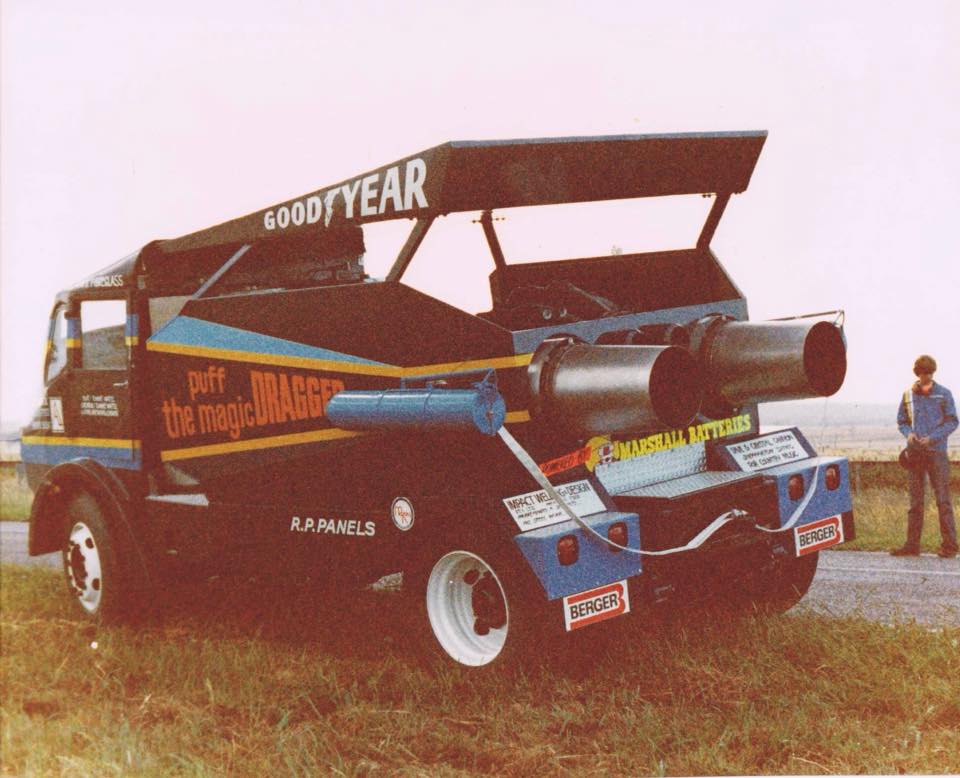
With this truck Tommy broke several speed records including the standing quarter, half mile and half kilometre. However on 2nd March 1980 whilst attempting another record in the truck on a closed section of public highway, Tommy lost control of the vehicle. Senior Constable Bill Reiss with a timing crew just at the side of the road said the truck appeared to hit a section of gravel during its run and started to slew with Tommy trying to avoid the bystanders it came off the road and rolled at around 155mph with Tommy sadly thrown from the truck and killed by the accident aged just 57.
Chatting with Tommy’s son Steve he told me that he and his father had travelled to the USA when Steve was just aged 10, to see the jet hydroplane Hustler / Captain Crazy when owned by Johnny Beaudoin having bought it off Lee Taylor.
Also this month I was kindly sent the following photograph from our local historian Andy Ball of the scout group at ICI chemical works, Thornton Cleveleys, showing them at camp in 1949 at Coniston Water.
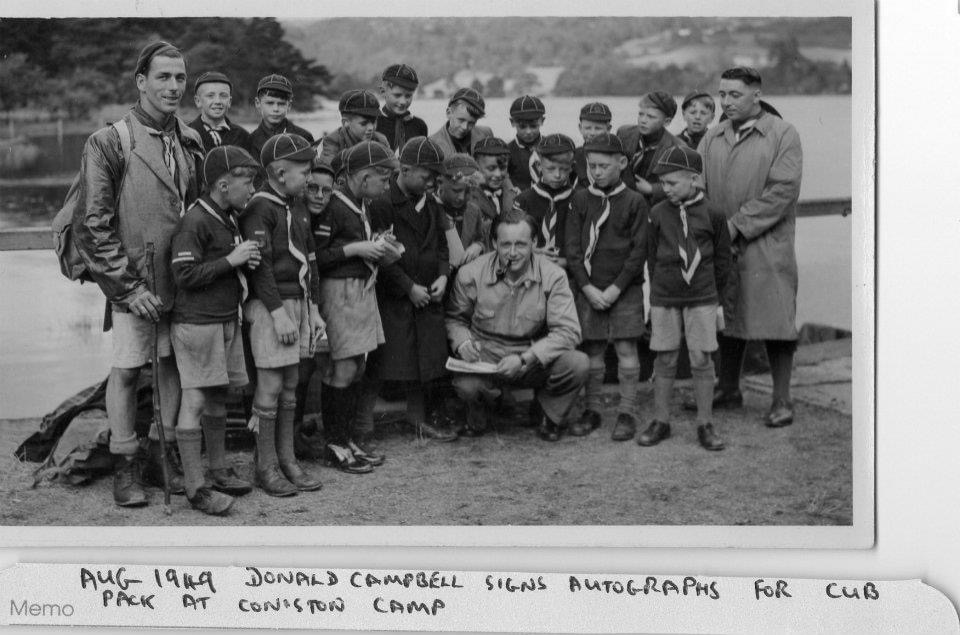
As you can see at the centre of the photo is Donald Campbell CBE, signing autographs for them whilst undertaking trials with his father’s record breaking propeller driven hydroplane Blue Bird K4, six years before Donald had his own jet hydroplane built Bluebird K7.
For those who wonder what the K number refers to, it was issued by Lloyd’s Register for boats within the United Kingdom attempting the Water Speed Record so the Register was not specific to the Campbell’s craft hence the gap in numbers between father and son’s boats. Also for the enthusiasts whilst Donald’s record breaking boat and car were titled Bluebird, his father Sir Malcolm Campbell MBE, had his boats and cars named Blue Bird.
In other news this month the rear wing for our good friend Dave Warby’s jet hydroplane Spirit of Australia II is well under construction as shown in the following photograph and she is going to look very different once the T tail is fitted into place.
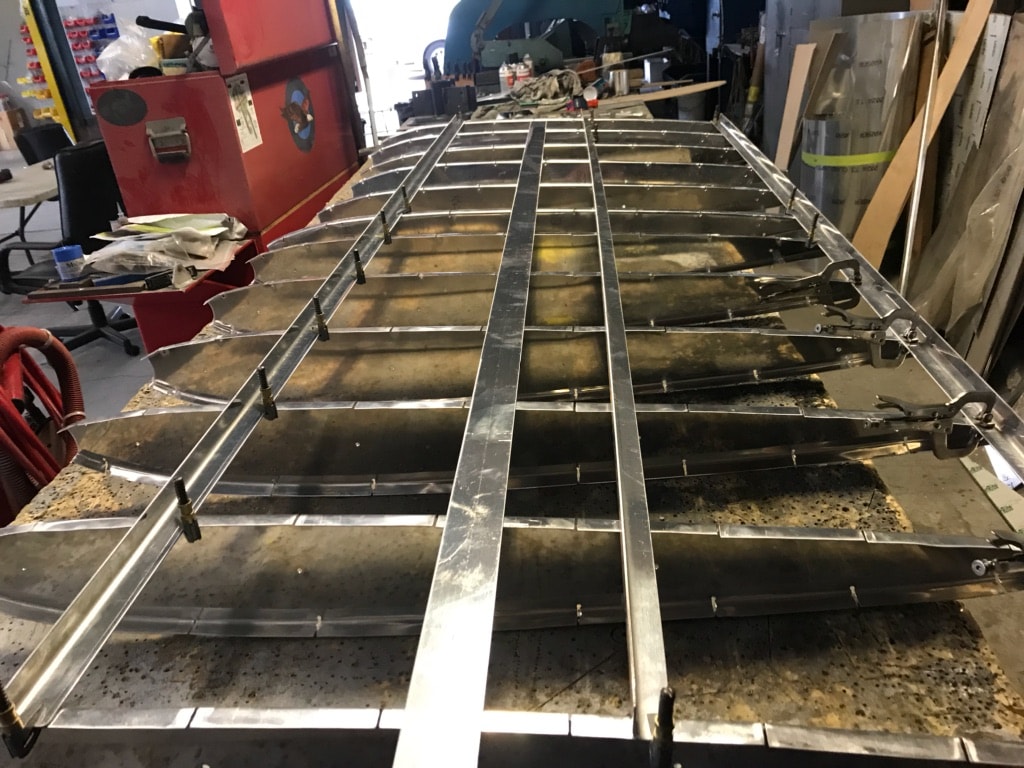
Back with Longbow the job for this month has been to form the laminated frames for the sponsons upon which the forward planing surfaces will later be attached. They look relatively simple to form but that disguises quite a lot of work that goes into physically producing them from the drawings. To begin with they are formed from approximately 150 pieces of wood from our superb sponsor of the build Robbins Timber that are all different so it is like a big jigsaw to bring them all together cutting and shaping each piece to fit.
For those that have been following the venture they will appreciate that room in my cottage workshop is very limited now Longbow is taking shape and for that reason I had sent the large freestanding dust extractor back to my friend Steve. However this was a decision I began to regret as I got into the sanding of each piece forming the sponson timber frames as the vacuum proved to be no substitute. Whilst face masks are now necessary in the company of others with the pandemic, they were also very much required in the workshop and fortunately the ones provided to keep the dust at bay provided by our great sponsor Trend proved to be excellent.
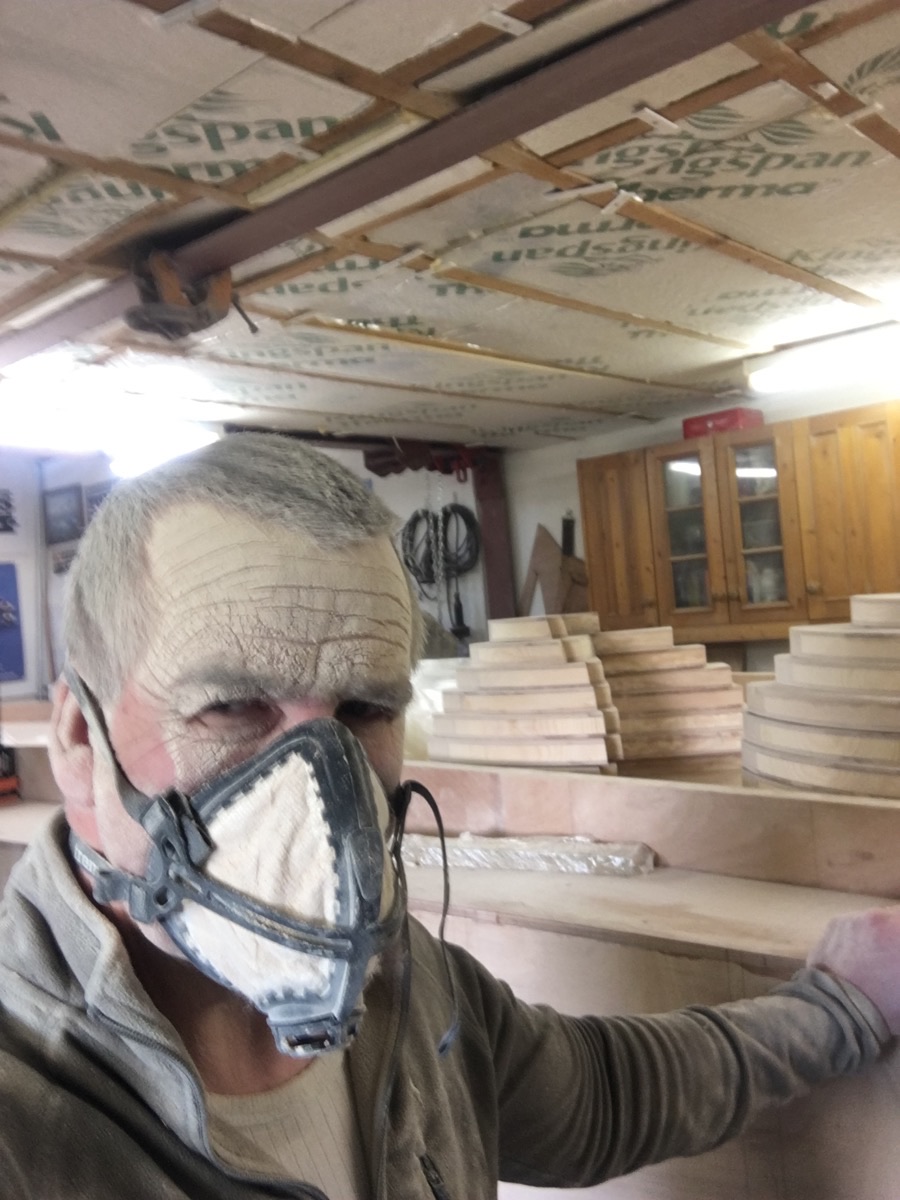
Once the dust was cleared my good lady wife Gill came into the workshop to help out with mixing and applying the WEST SYSTEM Epoxy provided by our superb sponsor Wessex Resins in order to laminate the timber sections together. These were then held in place using our sponsor Sealey’s F clamps which we cannot recommend highly enough as they constantly get covered in epoxy but readily clean off for the next round of use.
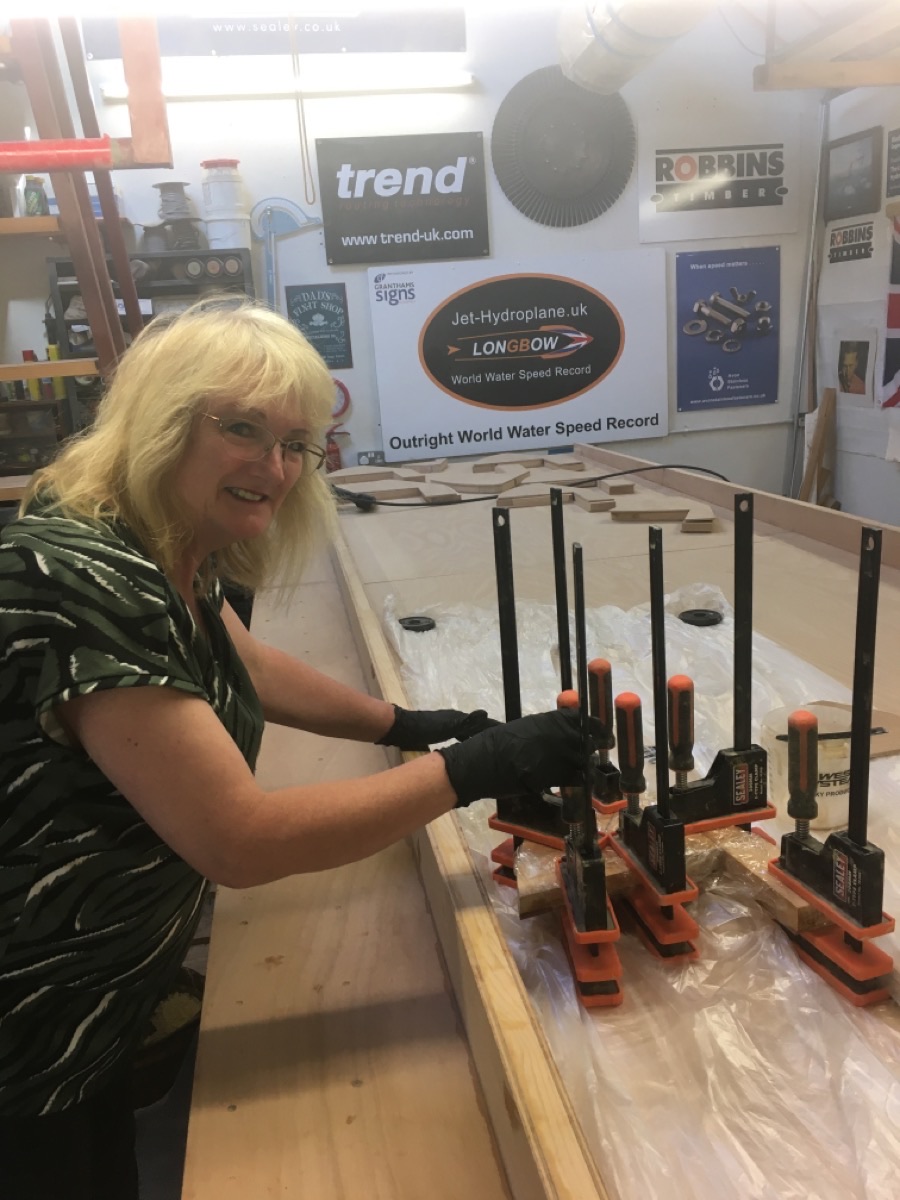
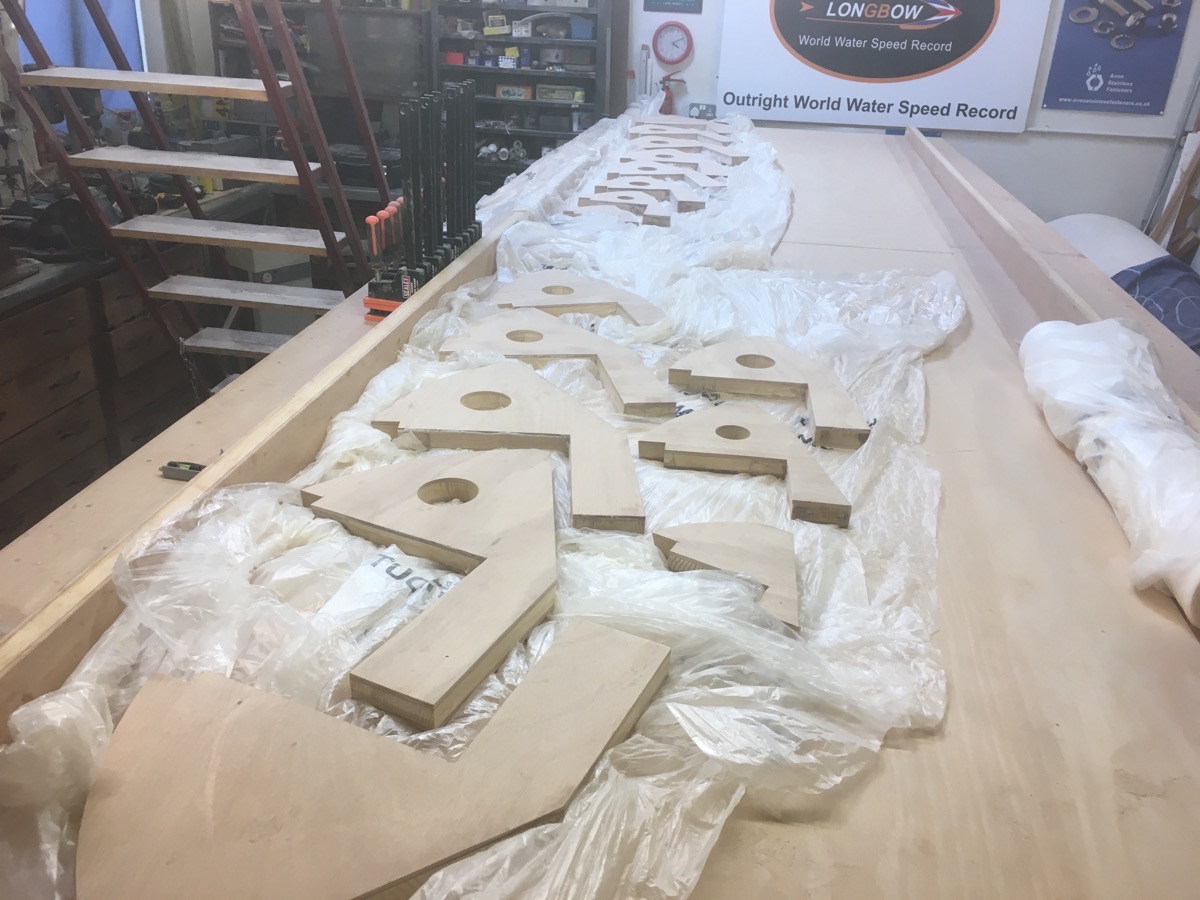
After the WEST SYSTEM Epoxy had cured the laminated sponson frames were then cleaned up and again with the help of Gill and my eldest son Tom who is on lockdown with us we could then fix into place the frames onto the upturned hull of Longbow with more of the same epoxy and marine grade stainless screws provided by our sponsor Avon Stainless Fasteners. Again a multitude of clamps and weights keeping everything in place during curing of the epoxy.
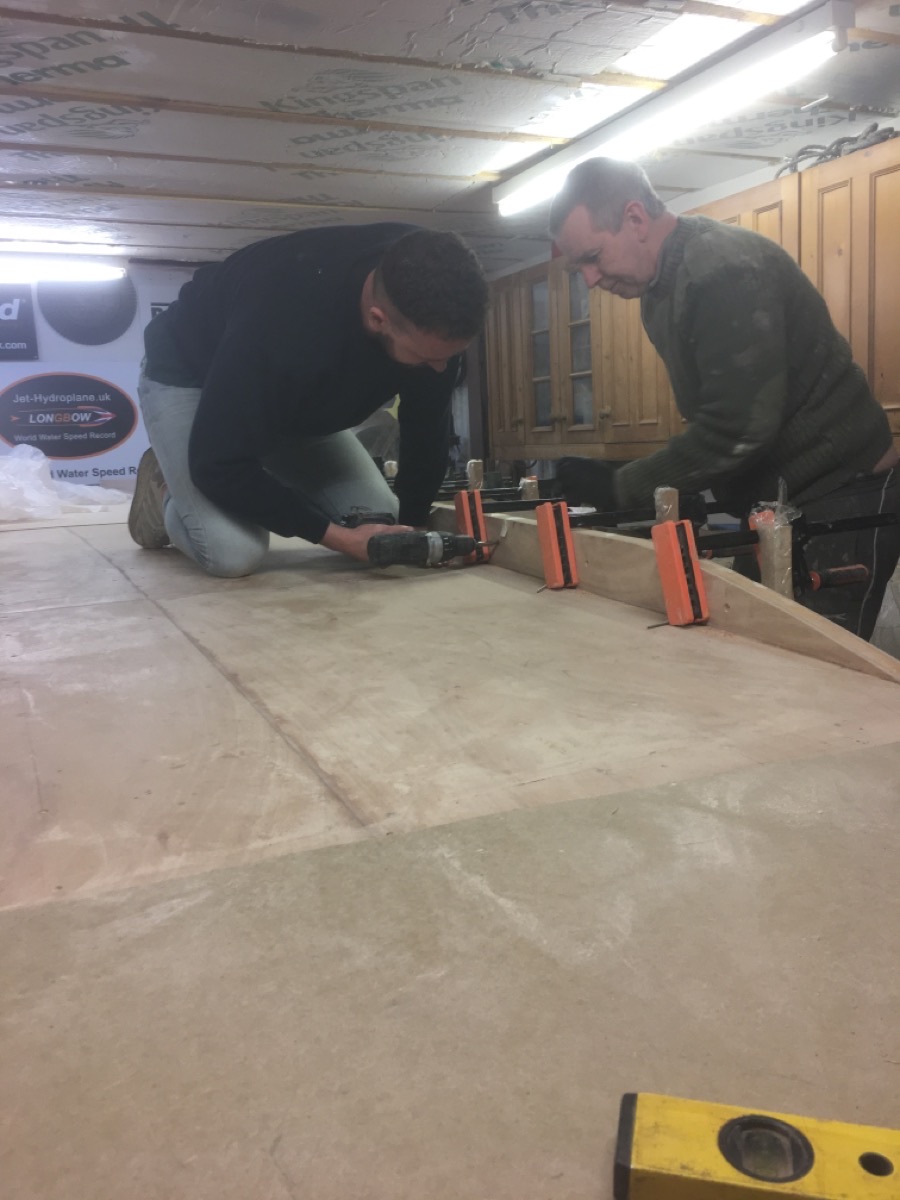
Once the epoxy attaching the sponson frames to the hull were again cleaned up you can begin to appreciate the shape of the hull coming together and the true size of Longbow.
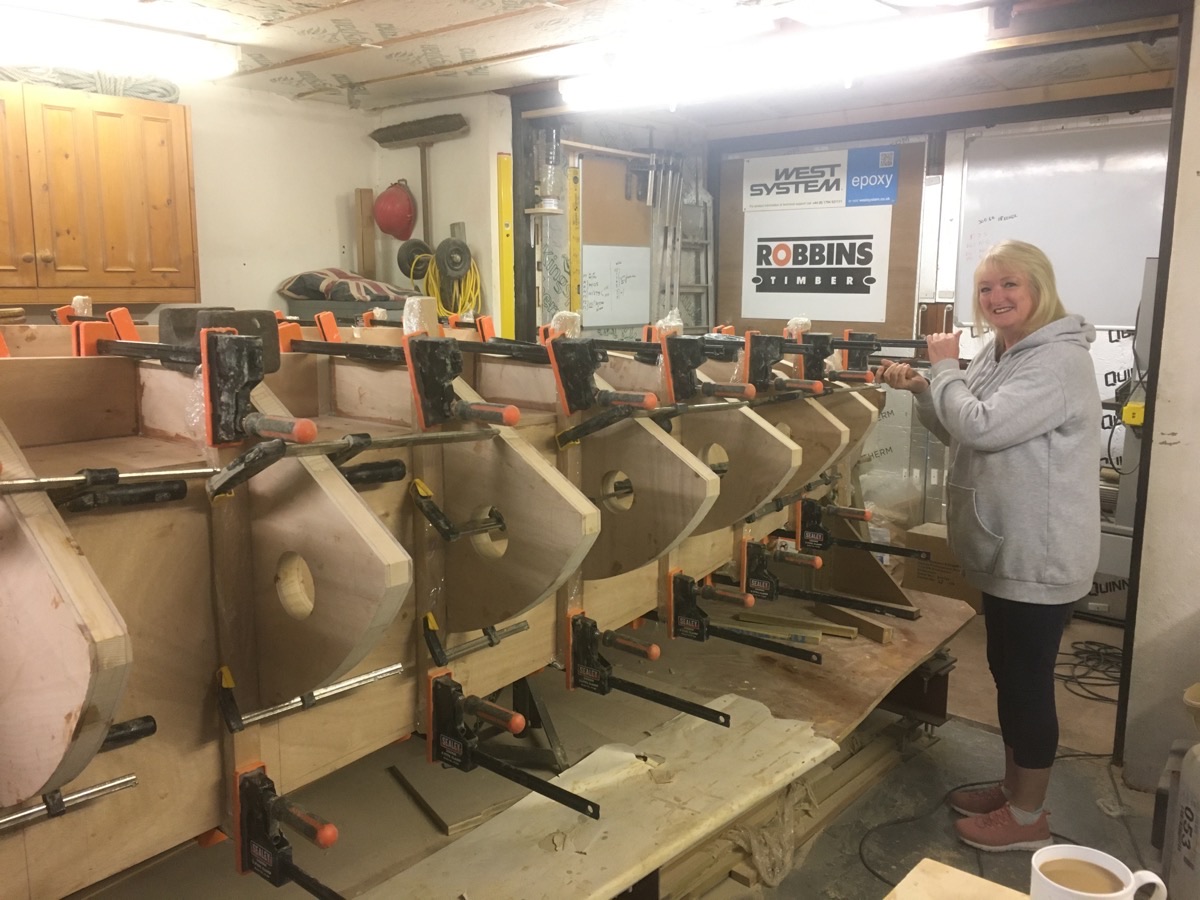
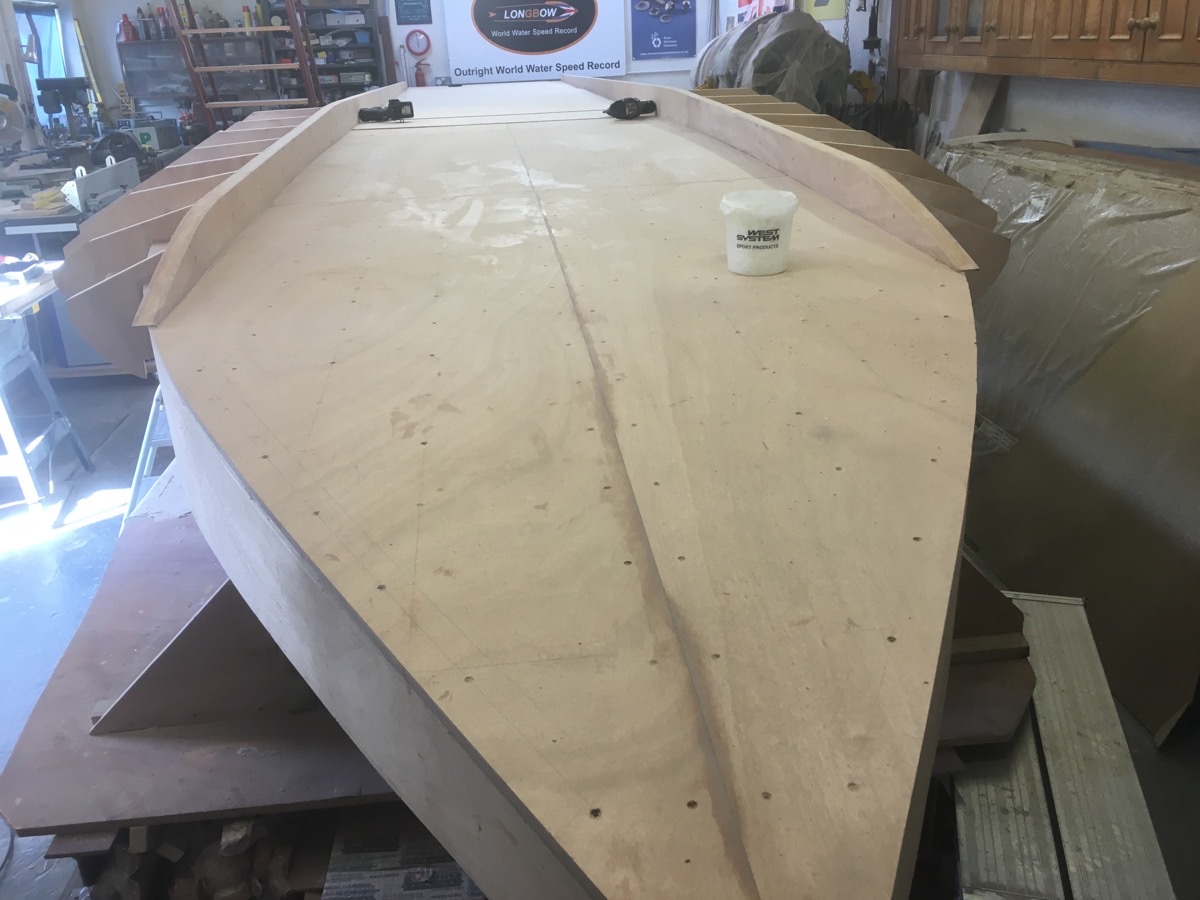
We also must thank Steve Buckle of Sealey who in amongst working flat out to keep deliveries to essential workers kindly sent us one of their electrical fuel pumps to use when we come to doing static engine tests of the twin Rolls Royce Viper 535 jet engines that will power Longbow.
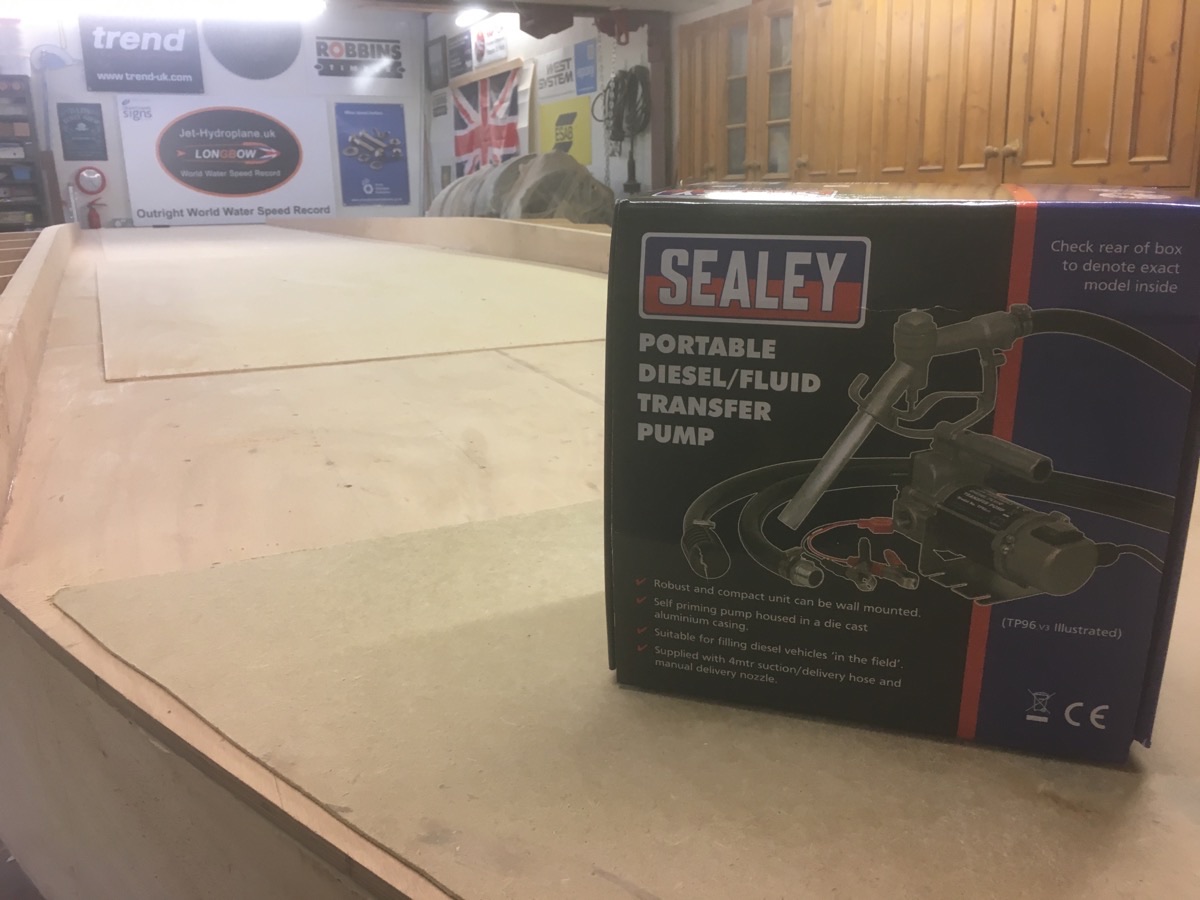
The engines themselves have a mechanical fuel pump that is driven through the engine gearbox but delivering fuel to that engine pump has to be accomplished by a separate electrical fuel pump.
Whilst we have the electrical fuel pumps from the Strikemaster aircraft from which the engines were taken for use in the hull of Longbow, they are of a type that needs to be bolted into the fuel tank and submerged in fuel. This Sealey electrical fuel transfer pump provides an easy temporary solution of fuel transfer for engine testing from test tank to engine.
That is all for this month folks and hope you enjoyed reading our little update as I move on to the next stage of the build of our jet hydroplane Longbow during lockdown. If you can stay at home then please do so as it is the safest place from this virus and if you are one of the heroes who are on the frontline helping us all get through this, then we pray you stay well. Thank you for tuning in and please do so again at the end of next month to keep in touch with the next stage of this exciting venture.
